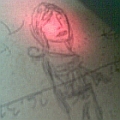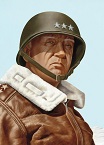el cid again
Posts: 16922
Joined: 10/10/2005
Status: offline

|
Finally I have found an acceptable way to model these units which makes
them more than chrome, but functional. A surprising problem was the symbol.
I was forced to compromise and use an artillery symbol (caused by defining
them as artillery units), which I did not want to do (because they have NO
artillery!). This classification permits a suffix of "regiment" which is not
only correct, but permits a commander of relatively low rank (classified as
small ground unit). I wanted to use HQ classification, but AE does not really
permit HQ to use officers for "small ground units" nor the "regiment" suffix.
These compromise units are actually a bit more than the Artillery Intelligence
Regiments per se: they include everything in the HQ of an artillery brigade
other than elements of artillery companies, battalions or regiments. The most
important of these elements are "tractor companies" and the HQ staff and
communication elements. That is slightly awkward in that not every artillery
command at the start of the game has one of these regiments, yet they really do
have a HQ staff and communications element, and a "tractor company" as well.
The tractor company part can be addressed by attaching it to the largest artillery
unit in the command. Modding, as with game design, is an endless series of
compromises between perfect modeling and what will work in software terms.
The invention of "spotters" (ground) for RHS does give these units a real intelligence
value for the hex they are in. A spotter is a low probability of detection surface
search radar. It was originally intended (when RHS added it) for use vs ships at night,
mainly for coast defense artillery units, or in the form of "night glasses/ship", for
surface naval combat at night. However, these regiments, which are carefully designed
to model actual organization, have 15 of these spotters. That should result in very
good reporting of enemy ground units in the same hex, at least on the turn after the
unit arrives in the hex.
A different invention for these units, which I have already applied to armor units bigger
than a battalion (albeit in a very limited way), permits the combined units to be self
supporting. It changes the meaning of "support" inside a composite unit from purely
logistical and cosmetic to an actual support unit. RHS added supply and support units
mainly so supply consumption and transport requirements will be right. AE (and WITP
generally) only model "combat effective" elements in a command. This has a very perverse
impact on supply requirements. It ALWAYS is too small, and the LESS EFFICIENT units, which
have less firepower, do NOT require MORE supplies and more sealift, airlift or rail/road
capacity impacts as they should. [That is because "pack" units use human bearers or
pack mule strings, which carry very little, but eat a lot of what they carry; "draft"
units use carts, still feed animals, but carry more than pack strings do; "motor" units
carry more cargo without feeding any animals to feed. To which add that pack units often
have the very weakest artillery (which is all they can haul along), draft units often
have slightly better artillery (at least in range, sometimes also in shell weight), while
motor units usually have longer range artillery with heavier shells. The net effect is that
a typical units that is pack is the weakest in firepower, but the most expensive to feed and
lift, while the motor units are the least expensive to feed and lift, but usually have more
firepower - draft units being usually slightly more powerful and slightly cheaper to feed
than pack units. This kind of modeling is very good and applies equally to both sides, but
it is more of an "invisible" advantage for the Allies, which have more motorized units, and
which get ever more of them as time passes. The relative advantage of motorization does
apply to the Axis, however, with the few units that have it, and that makes them preferable
to use (maximum power for least cost in lift and supplies).] Adar got me thinking about this
by complaining my "support" was "only cosmetic, not real." Well, now it is kind of real.
An Artillery Command (IF it includes an artillery intelligence regiment) is usually almost
perfectly self supporting (because it has motorized support squads at a higher ratio to
squads supported). Instead of the nominal SOP of a unit gets 5/6 of the support it needs
(so a HQ can supply more, making it more "supported" IF an HQ is around), an Artillery command
has that support sort of organic (particularly if you combine its elements into one unit).
The actual ratio depends on the command itself. The smallest command (the First) has a better
support ratio than the largest (the Fifth at the time of Okinawa), because there is less to
support in the First than in the Fifth. This is because all of the artillery intelligence
regiments were almost exactly the same in organization (even more than they were the same in
size, slight variations in manpower and vehicles did not change the numbers of functional units).
As well, the number of tractor companies assigned varies from zero to two, with one being typical,
for an artillery command. We CAN model this part because we define each artillery support regiment
individually and assign it to a specific artillery command. A different effect is that the player
gets the better intel in the hex due to the (ground) spotters, and so does AI, which may help
make other ground units more effective occasionally.
There is some uncertainty remaining. Older materials suggest there were only three
artillery intelligence regiments in December, 1941, with three more forming in early 1945. Newer
material suggests there were four in 1941 and that one of them was split, literally in two places
at the same time (with fewer squads in both places of course). Now I have these units working the
best I can, I will render artillery commands properly defined (but only for specific dates). Most
will appear in their 1941 form, and sometimes "grow" - e.g. the First Artillery Command has a
daughter unit (First Artillery Command minus) which starts the game, but which can become the full
First Artillery Command as it was used on Bataan, if it adds the regiments attached for that. Unlike
other artillery commands, which show up on Okinawa and Iwo Jima, or are sent to Japan, I don't know
where the First was in 1945? So the 1945 scenario assumes it was returned to Japan, and it is not
modified (since I don't know its 1945 form) - but still in its 1942 form. I am ignoring the one
case of a split artillery support unit and a split artillery command (in Manchukuo in 1941), assigning
them as combined units to just one of the two armies supported (the one with more artillery). It is
a simplification - players may attach the command to the other army, or to any army, if they pay
the price in political points to change command.
|
 Printable Version
Printable Version












 New Messages
New Messages No New Messages
No New Messages Hot Topic w/ New Messages
Hot Topic w/ New Messages Hot Topic w/o New Messages
Hot Topic w/o New Messages Locked w/ New Messages
Locked w/ New Messages Locked w/o New Messages
Locked w/o New Messages Post New Thread
Post New Thread